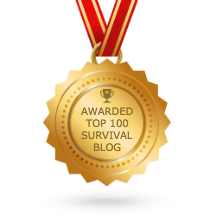Following a disaster, be it natural, or man-made, local emergency providers will probably be facing the same problems as the rest of the community. It can take three days, 72 hours, for anyone to come to your assistance, but in certain circumstances you may find yourself on your own for much longer than that.
We Americans take an endless supply of food for granted. Recent studies show that the average American family has less than a one week supply of food on hand. Grocery supermarkets and warehouses are the same.
Food storage is a major part of disaster preparedness and one that many people neglect to consider. In my articles I stress the need to be prepared to survive the 1st 72 hours following a disaster, but you would be well advised to store enough food your family to live for a month. In a true fuel crisis, in a widespread winter weather emergency, or following an act of terrorism, our normal food supplies will be depleted quickly.
In our unstable economy no one is sure if they will have a job next month, next week, or even tomorrow. Today, we Americans are more vulnerable to events beyond our control than we have been at any time since world War II. Food storage is an insurance policy that we can take to protect ourselves against such things as loss of power, job loss, unemployment due to injury or illness, or a loss of food supplies due to an interruption of food transportation.
This is not paranoia, survivalist thinking, or hoarding. It is a common sense practice that we have neglected because we could.
Here are some food storage tips that will make the practice more palatable, no pun intended.
The Basics
Always store a larger than normal supply of the basics, grains, dehydrated milk, sugar, salt, oil, flour, garden seeds and storable produce like potatoes, onions, beets, cabbage, etc.
Store food that is familiar and acceptable to your family and know how to prepare the food you store.
Use food from your stores that have a limited shelf life and replace them with fresh items, immediately.
If you have a limited budget, buy one item at a time until you have your stores in place.
Shopping at wholesale markets can save you a considerable amount of money on such things as salt, flour, oil and sugar.
Protect stored food from rodent and insect infestation by storing it in large tins. Empty potato chip cans make excellent storage containers. Many thrift stores and feed stores have these at rock bottom prices.
Once you have adopted this forgotten practice you will find that you actually feel better about your circumstances. Self-reliance is always better than depending on the charity of others who may, or may not, come to your rescue.
The author is currently certified by the Emergency management Institute under the auspices of FEMA and The Department of Homeland Security. He has been actively involved in disaster preparedness and survival techniques for more than half a century. You can get free up-to-date downloads and information about all facets of Urban Survival at: Dave Hardin Online
Simple: Just Add Water - Outdoor Gourmet Meals - WiseFoodStorage.com








